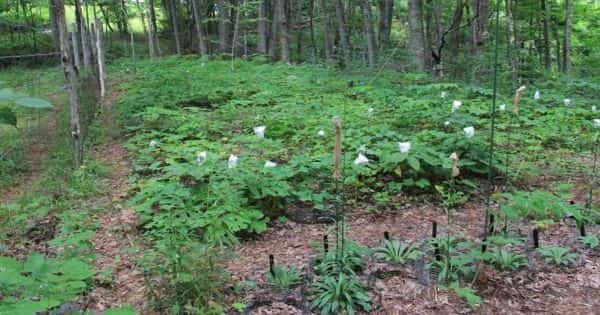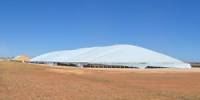Waterlogging and salinization are age-old nemeses of irrigated agriculture, and they continue to plague irrigated regions around the world. In fact, about 25% of the world’s irrigated land is affected by waterlogging and salinity due to saline high water tables. It has been estimated that 2.5 to 5 million acres of mostly prime agricultural land are becoming severely damaged through irrigation-induced salinization each year.
Salinity and drainage problems usually appear in intensively-irrigated alluvial valleys within a few decades to a few hundred years of the commencement of large-scale irrigation. Sooner or later, the artificially high rate of application of water to land exceeds the natural rate of drainage, the water table rises, and artificial drainage is needed to regain acceptable water and salt balance.
The problem of waterlogging may be attacked on two fronts. First is preventive measures, which keep the land free from waterlogging. Secondly, curative measures may be adopted to reclaim the waterlogged area. But in principle both measures aimed at reducing the inflow and augmenting the outflow from the underground reservoir.
There are various ways of preventing Waterlogging:
Control the Loss of Water – The seepage loss from the canals can be reduced by a number of measures. First, is by lowering the full supply level (FSL) of the canals to a sufficient extent. Secondly, is by lining the canal section by providing the lining with the seepage loss, which makes the canal section fairly watertight. Thirdly, is by introducing intercepting drains, which are constructed parallel to the canal.
Preventing the loss of water due to percolation from field channels and fields – The percolation loss can be removed by using water more economically. It may also be affected by keeping the intensity of irrigation low. Then only a small portion of the irrigable tract is flooded and consequently, the percolation loss takes place only on the limited area. It keeps the water-table sufficiently low.
Augmentation of outflow and prevention of inflow – It may be accomplished by introducing artificial open and underground drainage grid. It may also be achieved by improving the flow conditions of existing natural drainages.
Disposing of the Rainwater – Rainwater should be quickly removed from the soil’s surface, thereby preventing a rise in the level of the water table and subsequent waterlogging.
Not Using Alkaline Water – Alkaline water used in irrigation affects the soil and makes it more susceptible to waterlogging in the future. For this reason, alkaline water should not be used for irrigation purposes.
The mineral Alkali salts can accumulate on top of the soil creating a crust on the surface that prevents the surface water to drain as required.
Installation of lift irrigation systems – When a lift irrigation project in the form of a tube well irrigation system is introduced in the waterlogged area the water table gets lowered sufficiently. It is found to be a very successful method of reclaiming waterlogged land. Thus a combination of a canal system and a supplementary tube well irrigation system may be considered to be the most successful and efficient irrigation scheme.
Of course, it is true that it will create some complications while assessing the charges for irrigation water (The canal water being cheaper than tube well water). Implementation of drainage schemes: The waterlogged area may be reclaimed by introducing overland and underground drainage schemes.
Install Proper Drainage Systems – Draining the water means both the surface and sub-surface waters. It removes the water in a controlled manner and in a quick manner.
Before and when draining the water, be sure not to adversely affect the environment or neighboring lands which might also be affected by the waterlogging.
Mulching – It is not a preventative measure but a treatment measure that can help a plant grow even in waterlogged soil. Mulching involves the addition of either organic or inorganic materials that are spread on top of the soil.
The mulch covers the affected land by covering the soil and helping reduce evaporation losses. Crops can continue to grow even in the waterlogged area, while at the time, working with the aforementioned preventative measures to fix the problem.
Steps are being taken to reclaim the waterlogged land in the country. The steps taken to reclaim such areas include implementation of drainage schemes, provision of deep drains, excavation of new channels and improvement of existing ones, construction of sluices with a marginal embankment, and installation of tube wells.
Information Sources:
















